Category: Biomechanics (Page 1 of 2)
I can no longer sit idly by and say nothing – Derek Jeter has accepted a new role with the Miami Marlins. According to Twitter today, he is in great danger. What kind of danger, you say? Why, the danger of musculoskeletal disorders. THATS WHAT.
Let’s do an ergonomic assessment of Jeet’s office, and make some recommendations to help him out.
A new era begins. pic.twitter.com/WkqL2oyn2O
— Miami Marlins (@Marlins) October 3, 2017
This is the picture that lead me to believe that Derek is in grave danger. Take a look at that office set up – I’ve seen safer wood chippers. Derek – are you aware that your franchise is worth $1.17 billion, Giancarlo Stanton gets paid $25 million a year, and that chair is clearly from Staples. At most, they bought you a chair that cost $400.00. The biggest predictor of injury, is previous. With 8 trips (at least), to the DL in his career – he’s a huge risk for injury.
To take a look at how much of a risk Jeter’s office is, I’ve used the Rapid Office Strain Assessment (ROSA) – an ergonomic tool that examines how your office is used, and assigns a 1-10 scale representing an increasing risk of musculoskeletal discomfort. The research I did for my masters showed, if you have a ROSA score of greater than or equal to 5, you are at a greater risk of discomfort. Let’s dive in.
The Office Chair
I’ve expressed my displeasure in the chair itself, but how Derek is sitting is just as big of a problem. Not using the back rest? That’s going to cause his lower back muscles to just be on, firing at a low rate all day. “OH MAH BACK, HANNAH GET THE A535 – I GOTTA SLEEP IN THE RECLINER TONIGHT”.
At 6’3, we can make some assumptions about his chair. The first, is, it’s likely too small for him. It’s also not likely going to be adjustable for his gangly frame.
Most of these cheapo chairs have an adjustable seat height, and his knees look close to 90 degrees. We’re safe here.
Like I said – the chair depth is likely too short with him being so tall. Cheap chairs usually aren’t adjustable in the seat pan depth either.
The armrests – they’re not being used. He has his arms on the desk surface, and it looks like that surface is a bit high. There’s no way that cheap chair has adjustable arm rests, and it look a lot like a pressure point when his forearms are resting on the edge of that desk surface.
His chair back is likely not as much of a problem as is him leaning forward and not using the back rest. Also baseball executives?? Those are some loooong hours. Mark it up as a risk factor.
Monitor
What in the honest hell am I seeing here. Seriously. How is this even functional?? This is as useless as a jump throw from short when some injured jabroni is crawling to first base. Two iPads – to the side, with his documents on the other side of the desk. MARK IT ALL UP.
Telephone
I’m assuming he just uses his iPhone and talks with it in his hand when it’s on speakerphone and is a total annoying jerk about it. I don’t want to hear your conversations man, just put in your headphones.
Mouse and Keyboard
I have no idea what’s going on here. But, it looks like the bathroom of a Buffalo Wild Wings after all you can eat curry wing night. Does he have to use the touch screens all day? His arm is going to fall off. Does he type on those things? His wrists are going to get carpal tunnel, then that carpal tunnel will develop a small ecosystem inside of it, and everything in there will get it’s own separate disorders. Like Inception, but for wrist pain.
The final verdict
Hi Derek, come into my office. I’m Dr. Mike. I have your test results here, and, I’m sorry… but your ROSA score is above 5. You’re at a high risk of discomfort. I’ll leave you alone for a bit to process this, and then we can go through some of your options.
Mostly, before we can get a good “YEAH JEETS” for this office set up, he’s going to need a more ergonomic chair. ErgoCentric makes chairs that will be great for taller guys like DJ.
The biggest thing is going to be, plugging those iPads into real accessories, and elevating them so they’re at eye level. A bluetooth keyboard and mouse – then putting the screen right in front of him – that’s going to make his head and Neck in a way better position. He’s also going to take a lot of pressure off of his arms and wrists while typing or mousing, or going on YouTube and watching his own highlights while the team around him implodes and trades off yet another crop of stars.
The hits just keep on coming from the Motus Sleeve and Driveline! Last week, the brains at driveline posted their data from 70 pitchers throwing 5 pitch, fastball bullpen sessions, and the Motus and velocity data to go along with them.
For those of you who don’t know what the Motus Baseball Sleeve is, it is a device that fits neatly into a compression sleeve, which can be worn by baseball pitchers to get the predicted ulnar collateral ligament (UCL) stress that occurs during throwing. It also provides pitchers and coaches with data on the arm slot (with respect to horizontal), the arm speed (in RPM), and the maximum predicted external rotation of the shoulder.
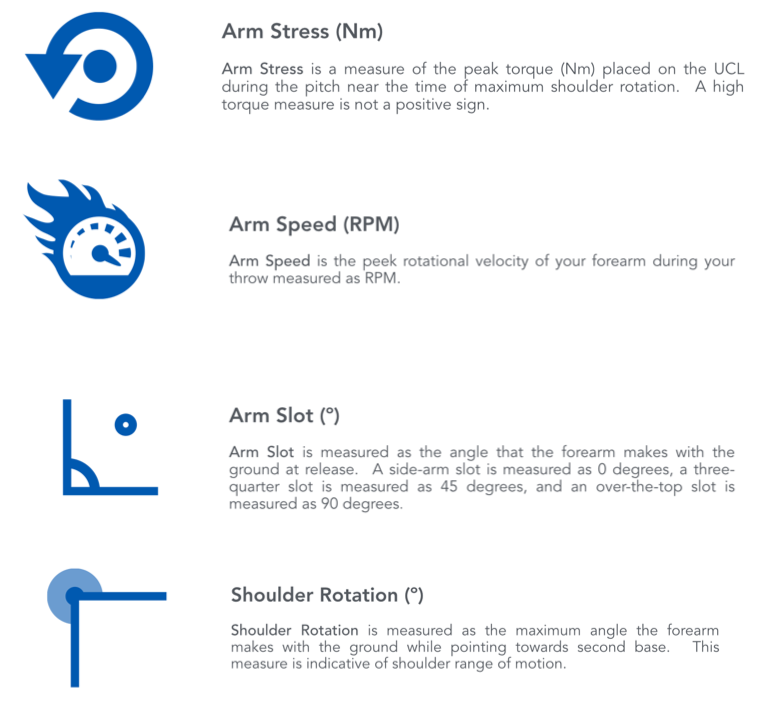
Figure 1. A description of the key metrics from the Motus Throw app – found at http://msupport.motusglobal.com/hc/en-us/articles/207295137-Key-Metrics.
I have explored the relationship between pitch velocity and elbow stress on this site before, and the driveline team has done the same thing for both fastballs, and breaking pitches. Currently, pitch velocity appears to explain about 17% of the variance in elbow stress. That means – before you look at anything else – pitcher height, mechanics, fastball type – you have 17% of your elbow stress already accounted for. While this doesn’t seem like much, you can see there is a positive, significant relationship between velocity and elbow stress.
So, if 17 % of the elbow stress is accounted for by the pitch velocity, where are the other 83%? And, if two people throw at the same speed, but one has higher elbow stress than the other – what’s going on there?
I broke the driveline data down by velocity percentiles – just to help normalize things. I then broke this down into 5 % ile windows. At each 5%ile window for velocity, I looked at what the average predicted UCL stress was. I then determined if the pitch had greater than, or less than average stress at a given velocity range. Finally, I examined the average arm slot, arm speed, and shoulder rotation for those who had less than average, or more than average elbow stress, at a given velocity.
Results
When examining the data by pitch, there were 420 samples (nice). Comparing the higher than average stress, and the lower than average stress groups at standardized pitch velocities, there were some interesting findings. To determine statistical significance between the low and high stress groups, a t-test was used with significance set to p < 0.05. Cohen’s d was calculated for significant effects.

Figure 3. Average Arm Speed, Arm Slot, and Shoulder rotation for pitches that were over average stress levels at a set velocity level.
Higher stress pitches at a given velocity had significantly lower arm speeds (figure 3A), and significantly higher arm slots (p < 0.05, d = 0.26, and 0.21, respectively). There was no statistically significant difference between maximum shoulder rotation angles in either group (p < 0.05). This is particularly interesting, as Whiteside and colleagues (2016), found there was a significantly higher risk of UCL reconstruction surgery in pitchers with less pronounced horizontal release points. These data seem to support their findings.
The next step is to include anthropometric measures of height and weight into these calculations, and see how those improve the prediction of elbow stress alongside the key motus metrics.
References
O’Connell, M., and Boddy, K. (2017). Bullpens, Tracking Elbow Torque, and mStress. Retrieved from https://www.drivelinebaseball.com/2017/03/bullpens-tracking-elbow-torque-and-mstress/, March 4, 2017.
Whiteside, D., Martini, D. N., Lepley, A. S., Zernicke, R. F., & Goulet, G. C. (2016). Predictors of ulnar collateral ligament reconstruction in Major League Baseball pitchers. The American journal of sports medicine, 44(9), 2202-2209.
If you follow me on Twitter, you’ve likely noted that I get quite upset about the idea of pitch clocks. Why would I hate the supposed silver bullet that will end all pace of play concerns, bring new fans to the game, cause all fans to lose 25 lbs instantly, and make McDonald’s a health alternative to vegetables? Despite what you’re hearing about the benefits of pitch clocks, there are some concerns related to the health of pitchers. Let me explain why I have taken such a strong stance against them.
Muscle fatigue is a very specific process that decreases the amount of force that a muscle can generate. It is NOT just an expression of how tired a person feels. If a muscle is active, small amounts of muscle force generating capacity are lost at the smallest function level of the muscle – the motor unit. Overall muscle force at a joint level can be maintained by switching between which muscles are active, or recruiting additional motor units, but you cannot escape muscle fatigue. So let’s be clear on that – muscle fatigue is a decrease in muscle force at the muscle fiber level. The other type of fatigue that we study as researchers, is central fatigue. This is related to decreased output from the system prior to the muscle – so that means, a reduction of the available oxygen in the bloodstream, an inhibition in neural drive from the brain (such as pain, or decreased motivation), or inability to remove metabolites from the blood stream. These factors can occur, or not be occurring at the same time as muscle fatigue.
Dr. Jeremy Bruce, and Dr. James Andrews wrote a review article on Ulnar Collateral Ligament injuries (Figure 1), and one of their primary findings centered around the role of muscle fatigue on UCL ruptures. The findings boil down to this: when you throw a baseball as hard as you can, the stress on the elbow is theoretically more than enough to tear your UCL. What protects the UCL, is the activation of the muscles of the flexor pronator mass. If those muscles become fatigued, they will not be able to exert as much force, and as a result, the UCL becomes at risk of rupture.
So, how do you get away from this evil fatigue monster? Once again, its complicated (it depends on the types of efforts you’ve performed, how long you’ve been working for, etc), but in its simplest form, the prescription is: Stop! Recovery is ultimately dictated by the time you can rest. The time between pitches, or the time between innings, is when pitchers have time to recover from muscle fatigue. This is where my disdain for pitch clocks comes from.
Last year, I published a paper in the Journal of Sports Sciences 2 on the implications of pitch clocks on the accumulation of muscle fatigue. Compared to the self selected paces pitchers had (from FanGraphs), forcing pitchers to throw every 20 seconds increased fatigue levels for starting pitchers (Figure 2).
Technically, the rules (Rule 8.04) state that the pitcher has 12 seconds to throw a pitch once receiving the ball from the catcher – this is obviously not enforced. If this was actually enforced, there would be even more fatigue in pitchers.
Shortening the amount of rest between pitches will increase the amount of muscle fatigue in pitchers. If you had 24 seconds of recovery, and now you only have 20 seconds of recovery – you will be more fatigued. How would this look in a typical major league baseball game? Not too long ago, I described a method to make some interesting graphs showing predicted fatigue levels in baseball games, using my fatigue model, and MLB’s GameDay data. As a Blue Jays fan, one of the most exciting moments I can remember as an adult, was when my favourite pitcher – David Price – was traded to my favourite team. In one of his first games as a Blue Jay, Price went 8 innings, and struck out 11 Minnesota Twins. Price has routinely been regarded as one of the slowest pitchers in the MLB – his pace often ranks in the top 3 of all starting pitchers. I replaced his long stretches during his games with the 20 second pitch clock limit, and this is what we’re left with:

Predicted forearm muscle fatigue, with (Red), and without (Blue) the implementation of a pitch clock (20 seconds).
In this situation, (and without assuming a significant influence in the other team’s pace), we see a reduction in time of 8.38% – going from 167 minutes, to 153 minutes – keep in mind, this doesn’t factor in the bullpen visits, or the time spent celebrating the victory afterwards. In this case, this was the time of the first 8 innings for the home team – so there would be an other inning and a half to come. At the same time, you can see in red (the condition where there is a pitch clock), that there is a lot more fatigue with the pitch clock – particularly in the 4th, and the 8th innings. Peak fatigue levels are more than 18% higher when the pitch clock is implemented.
As I have argued in the past – it’s not just injury to worry about. It is assumed that pitchers will perform at the same level when the pitch clocks are in place, when in reality – pitchers who are fatigued are shown to have less command, and less velocity. This would in turn result in more base runners, further extending the game. I hypothesize pitch clocks would have a minimal effect in reducing the time of games, all things considered.
Will the MLB eventually go with Pitch Clocks? I wouldn’t be surprised – it seems like Rob Manfred is hell bent on his crusade to speed up baseball games, turning them into NFL Blitz/ NBA Jam versions of themselves. Are these changes needed? Time will tell – but right now, it seems like those who like baseball, are fine with it in the current state.
References
Bruce, J. R., & Andrews, J. R. (2014). Ulnar collateral ligament injuries in the throwing athlete. Journal of the American Academy of Orthopaedic Surgeons, 22(5), 315-325.
Sonne, M. W., & Keir, P. J. (2016). Major League Baseball pace-of-play rules and their influence on predicted muscle fatigue during simulated baseball games. Journal of sports sciences, 34(21), 2054-2062.
I wanted to start this (the final post of 2016) off on a sappy note. This has been the first year that I’ve been involved in writing about baseball from a scientific perspective. When I started my PhD at McMaster, there was a department seminar meeting, which focused on science and knowledge translation. The speaker, who was a world leader in her field, told us that on average – research takes 14 years to make it from the lab to the field. I made it my focus to try and reduce those numbers. While my PhD had an ergonomics application, I have really enjoyed trying to tie the worlds of baseball and ergonomics together. Fatigue Units, and the fancy fatigue graphs, and the paper arguing against pitch clocks, all use the model I developed for my PhD thesis. If you have read anything I have written this year, I am eternally thankful! Interacting with people through Twitter, email, and this blog, has been one of the most fun and rewarding experiences I’ve had as a scientist. I really want to thank Dr. Stephen Osterer, Dr. Michael Chivers, Tavis Bruce, Kyle Boddy, Michael O’Connell, Trip Somers, Kevin Kennedy, and Eno Sarris for helping me get my ideas out there. You guys know so much more than me about baseball, but thanks for listening to me anyway!
Alright, enough of that – time for nerd stuff.
I’ve had a chance to look at Fleisig’s most recent paper 1 on arm forces during weighted ball training. This paper is a very important step towards determining the safety of a very effective method for pitcher development. If pitchers are getting better, but increasing their risk of injury – what’s the point in throwing harder? At the same time, maybe throwing these weighted implements serves as a unique stimulus for muscle growth and arm health. A lot of questions are still out there waiting to be answered, but this is an important first step.
So, let’s look at things as simply as we can. One of the first equations you learn in physics, or in the application of physics to the human body – biomechanics – is that force is equal to mass times acceleration.
F = M*A
One of the main findings of this study, was overweight baseball throwing produced lower forces on the arm, primarily, lower varus torques when compared to normal weight baseballs. With respect to injury prevention, and specifically, Ulnar Collateral Ligament tears, this is a good thing! Lower varus torques mean less strain on the ligament, and a reduced risk of tearing when compared to the normal weight baseballs.
How does throwing something heavier result in less force in a joint? It all comes back to F = M*A. If we keep acceleration constant, and want to decrease force, we’d need to decrease the mass of the segment (and implement) being rotated. Similarly, if we wanted force to be lower, but increased the mass, we’d need to significantly reduce the acceleration of the segment. From table 1 in the Fleisig paper, we can see that the accelerations of the shoulder, elbow, and pelvis are all lower in the heavier ball conditions when compared to the underweight, and overweight baseballs.
However, the overall varus torque on the elbow, and the directly transmitted torque to the ligament may not be the same thing.
Werner et al., (1993) 2, illustrated that torques incurred at the elbow during the pitching motion are greater than the known torsional torques required to rupture the UCL. Muscle activation is used to transmit these forces off of the ligaments, and prevent damage to the UCL. This is why it is dangerous for the flexor-pronator muscles to become fatigued, and lose their ability to produce muscle force during pitching (Bruce & Andrews, 2014) 3.
Joint rotational stiffness refers to how rigid a joint is while it is moved 4. In the human body, stiffness is controlled by increasing the co-contraction of muscles spanning a joint. For example, activating the flexor muscles of the elbow (the biceps), as the elbow is rapidly extending (using the triceps). A stiffer joint (with more muscle activation) theoretically protects the ligaments by transmitting rotational torques from “passive” tissues (those tissues which are not contracting), to the “active” tissues (the muscles which are contracting). However, by increasing stiffness of a joint, the body loses the ability to produce high rotational accelerations and velocities.
Think about it as a whip – a thicker piece of rope can not rotate as quickly, and snap as violently as a thinner piece of rope. At the same time, the thinner rope is at a higher risk of fraying and breaking than a thicker rope. In the body, a joint with less stiffness can move faster, and more smoothly than a joint with more stiffness.
When throwing a heavier implement as hard as you can, there has to be more joint rotational stiffness in place to protect the ligaments. However, as the motion becomes more natural, and more familiar to the thrower, stiffness will decrease. This will result in a ball velocity increase, and possibly, a re-mapping of muscle activation patterns for throwing the ball when returning to a normal weight ball. If you want to get deeper into this, and the concept of stability, stiffness, and joint rotational impedance, check out the work from some really smart guys – Mike Holmes, and Joshua Cashaback.
Does throwing a weighted ball decrease the total varus force at the elbow, but increase the amount of force that is actually transmitted to the ligament? For the sake of arguments, let’s say this is true. How do pitchers manage to stay healthy, while throwing harder? One of the possible ways to protect the UCL is to make sure that muscles are able to contract, and reduce the amount of force transmitted to the ligament. Putting in work in the weight room, and specifically, training the forearm muscles, could serve to cause hypertrophy, increasing the physiological cross sectional area of the muscle and allowing the muscle to pull with the same amount of absolute force, but at a lower effort level (associated with less muscle activation).
Research has shown there is very little effectiveness in restricting innings in pitchers with respect to preventing injury (Karakolis et al., 2016 5 ). Other research has shown that pitching velocity (and “Stuff” – sorry, shameless self-promotion) has increased linearly, year after year.
At the same time, the number of Tommy John Surgeries has also increased every year (particularly in younger pitchers) (Keri, 2015 6). Some people out there, who get their jollies on hoping people get hurt, so they can be proved right, even call this an epidemic.
(Figure from Keri, 2015).
So, let’s bring my crazy, mad scientist, aluminum foil hat-wearing hypothesis full circle. Back to this theory on stiffness – pitchers are finding ways to shut off their muscles through different training regimes – yes, even maximizing your throwing intent to throw as hard as humanly possible, could play a role in reducing co-contraction and joint stiffness. Over the long term, could this be causing a re-mapping of the muscle firing patterns, reducing stiffness in game-thrown pitches, exposing the UCL to greater stress? Furthermore, do strict innings limits, like the ones that Matt Harvey and Stephen Strasburg faced, lead to a de-training effect? Pitching is a unique motion – one that is difficult to replicate in a gym. As a result, could there be atrophy occurring in the forearm musculature due to reductions in throwing? Fleisig’s paper hypothesized that the “holds” drill, and throwing of weighted baseballs, could be an effective resistance training strategy. Now imagine, hypertrophy occurs, allowing for protection of the UCL during high velocity throws. This happens in the offseason, when pitchers are preparing for their next year of competitive baseball. They throw frequently, with the intent of getting better. Now, they enter the MLB season, and arbitrary limits are placed on their pitching. To stay in the major leagues, they have to keep their velocity high – but now, they have lost some of that muscle mass they grew during their training. When they return to throwing – the velocity remains the same, but the protective mechanisms are now reduced.
This isn’t meant to be a stance for or against weighted balls. I don’t coach baseball – I’m a fan of the game, and truly enjoy applying what I know about how people move to the game I passionately watch. Keep in mind, this post is a perspective – it is not tested, or even extensively researched. Selfishly, I like writing these things, because there are people out there who have the access to pitchers, equipment, and can answer these types of questions. Consider this – a challenge point to unlock more information about how the body works. If you are using this as some form of gospel to take a stand against weighted balls – don’t do that. Don’t be a dick.
So, that’s my theory on how using weighted baseballs for training, and pairing it with workload restrictions in season, could lead to an increase in UCL injuries.
It’s either that, or it’s aliens.
I’ve done a bunch of work modelling fatigue in pitchers, including the study used to suggest Pitch Clocks would lead to increased fatigue 1 , how pitches per inning influences fatigue levels 2 , and a new workload metric based on fatigue 3 . For a lot of these simulations, I used average pitch counts and paces from FanGraphs. This provides an overall picture of the estimated fatigue in a pitcher, but doesn’t really account for the individual variability associated with a game. I was originally trying to get a bigger picture idea of how fatigue accumulated during pitching – so this was appropriate. However, I missed out on some pretty cool looking graphs – which depending on who you talk to, is the entire point of science.
Last week, I tweeted out a few graphs that looked at predicted forearm fatigue in pitchers from games during the 2014, and 2015 season. Here was the first one:
Playing around with data visualization – Marco Estrada’s predicted forearm muscle fatigue during his game 5 gem from the 2015 ALCS. pic.twitter.com/fWqH0JaqWm
— Mike Sonne (@DrMikeSonne) December 2, 2016
In game 5 of the ALCS in 2015, Marco Estrada went 7 and 2/3 innings, staving off elimination and sending the series back to Kansas City. Estrada started out fast, and never gave up a run until the 7th inning. It was a sign of things to come – absolute clutch pitching performances that buoyed the Blue Jays pitching staff in the 2016 season. Here’s how I was able to get these simulations.
Methods
The first step in this method was to get the pitch types, sequence, and time of each pitch during an outing. From the MLB’s gameday data, I was able to pull this sequence out by querying the database by pitcher and game. Here’s the MySQL Query I used for that purpose:
select pitches.sv_id, atbats.inning, atbats.outs, pitches.pitch_type, atbats.des, atbats.pitcher from atbats, pitches, games where pitches.ab_id = atbats.ab_id and atbats.game_id = games.game_id and games.game_id = ‘23910’ and atbats.pitcher = 462136 order by atbats.inning, atbats.outs ASC
This produced a result that looked like this:
Figure 1. Sample output from the MySQL query posted in the snippet above.
Every pitch, organized by inning and sequence, for an individual pitcher in an individual game. That value on the left – the sv_id from the gameday atbats table, contained the date (YYMMDD_HHMMSS). Everything I needed to calculate the amount of time between each pitch.
From the paper on pitch clocks and fatigue, I had created a time history of muscle demands for a series of forearm muscles. These were defined as either fastball type pitches, or breaking type pitches. In the graphs, figure A are the demands for fastballs, and figure B are the demands of curve balls / breaking pitches. These time histories are from a series of studies, summarized in the pitch clock papers.
So, back to the Gameday database. I exported the demands from the query into Matlab. I coded each pitch as being either a fastball or a breaking ball, then attached the appropriate amount of rest after each pitch. Here’s an example from Marco Estrada’s ALCS game:
Figure 3. Pitch selection and rest time from Estrada’s game 5 of the 2015 ALCS. All pitches coded as a 1 were fastballs. All pitches coded as 2 were breaking pitches. These were used to simulate the time histories of demands for Estrada, and then determine the predicted fatigue level.
Figure 4. Muscle demands by pitch during a 12 pitch first inning. The first pitch of the game lead to a ground ball out. The next 7 pitches resulted in a strike out, followed by a 4 pitch strike out. You can see the larger gaps between pitches as being reflective the time between batters.
The largest numbers in this time history represented the time between innings. What I have learned from this is, is just how fatiguing it can be for a pitcher to have a long inning, followed by a short half inning where his team goes three up three down.
At this point, I had everything I needed to predict fatigue in a pitcher. Using the EMG demands from figure 4, the three compartment fatigue model was able to generate an example of how much muscle force would be lost at a given time based on the previous history of muscle demands. For Estrada, his peak fatigue came during the 5th and 7th innings of the game. During these innings, he threw 14 and 17 pitches – the highest per inning in the game. In the 5th inning, he threw more fastballs than breaking pitches, which resulted in higher fatigue levels.
Interestingly. innings where pitchers throw more fastballs have higher fatigue levels. Greater homogeneity in pitch selection has been identified as a risk factor for UCL reconstruction by Whiteside and colleagues (2016) 4 have higher fatigue levels occur when pitchers throw more fastballs.
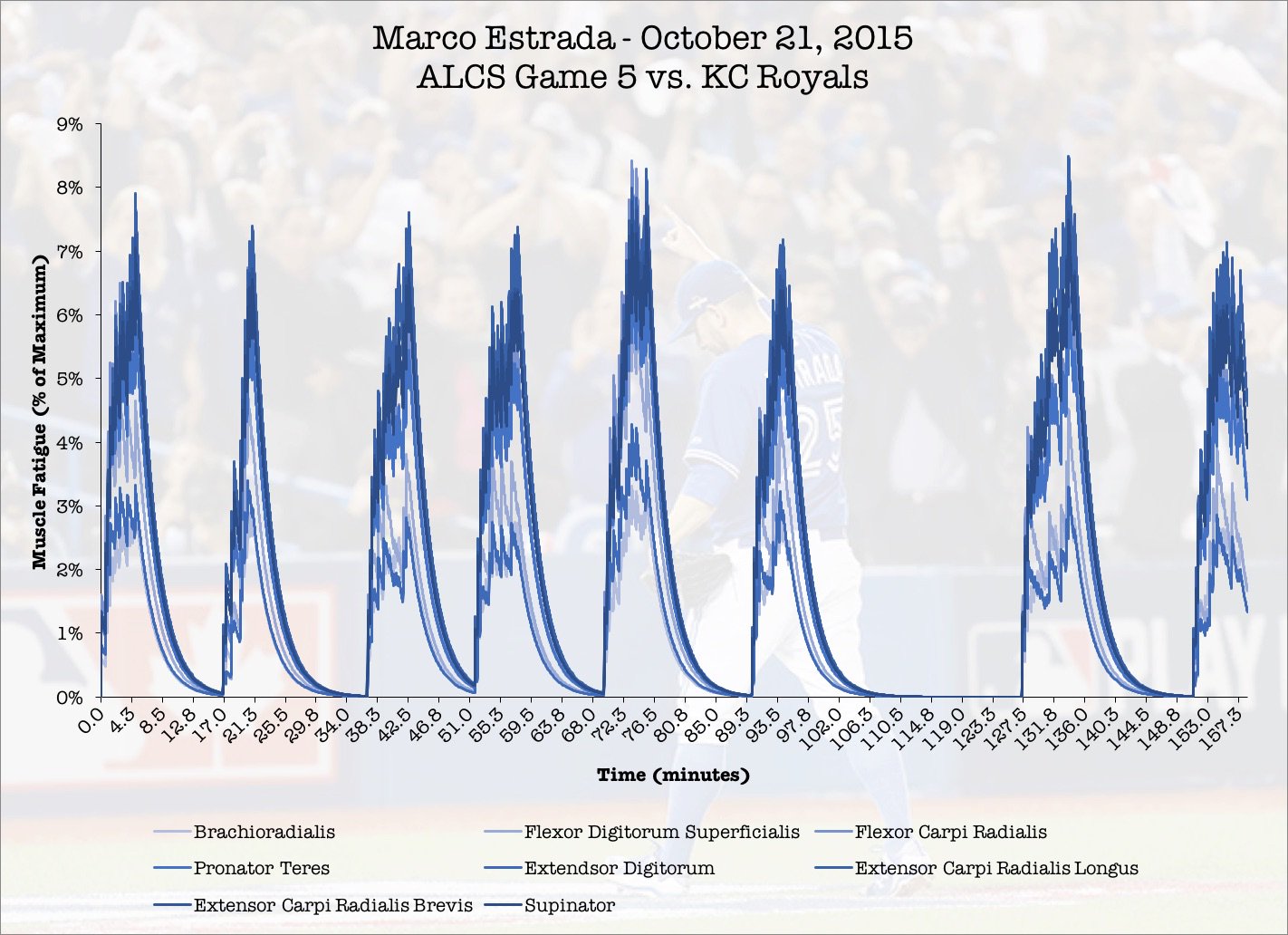
Conclusions
This methodology could now allow for examination of fatigue during starts where a pitcher was hurt, or from a series of starts where a pitcher became hurt. If at the start of the season, a pitcher had his EMG activation levels recorded during a bullpen session, these accurate demands could be substituted into the model for a more accurate fatigue prediction. For now – this is a fun new way to look at a pitching performance.
If you have any requests for simulations, let me know!
As previously mentioned, there really isn’t anything better than getting your hands on new data. That new data smell, the excitement of telling someone that the singular of data is datum. I was really excited to see a follow up study (O’Connell, Hart & Boddy, 2016) to the Bauerfeind study that examined the influence of pitch velocity on arm stress (O’Connell & Boddy, 2016). After reading the article, there were some really surprising findings that I wanted to look into further. More specifically – the claim this study replicated the findings of Post et al (2015), and found a non-significant relationship between elbow valgus torque, and ball velocity.
The study can be found here:
https://www.drivelinebaseball.com/elbow-stress-motus-sleeve-velocity/
But, here are some of the key findings.
- A “very small” relationship between the stress metric, and pitch velocity of r2 = 0.21
- “This contradicts a commonly believed hypothesis that when comparing pitchers across a population the ones who throw the hardest also experience the greatest stress. We are only looking at elbow stress, this may not hold up when looking at both elbow and shoulder stress. But this is a very interesting finding nonetheless!”
First of all, I wanted to look at simply the interpretation of these data. The r2 statistic infers how much of variable A can we infer from variable B. For example, if our r2 value is 0.5, that represents that variable B accounts for 50% of the variation in variable A. When studying human movement, Vincent and Weir (2012) proposed threshold values of r2 = 0.25 to 0.49 as low, 0.49 to 0.64 as moderate, and greater than 0.81 as strong. However, they included this caveat:
“Values lower than (0.25), if they are statistically significant, can be useful for identifying nonchance relationships among variables, but they are probably not large enough to be useful in predicting individual scores. However, in conjunction with more than one predictor variable (multiple regression)… even individually modest predictors may be useful”
– Vincent & Weir, 2012, page 117.
The values reported in their text are r values, but I have adjusted them to be r2 values.
So, let’s look at these results – a “very small” relationship, and “similar to the findings of Post et al., 2015”. Post et al (2015) found
“very small r2 values, indicated that very little of the variance in joint kinetics can be explained by ball velocity… the correlations between ball velocity and both elbow-valgus torque and shoulder external-rotation torque were not significant”
The values reported by Post et al (2015) were an r2 of 0.04, and p=0.053, or, 4% of elbow valgus torque could be explained by ball velocity, and this relationship was not statistically significant. This is where I have some concerns with the interpretations of the newest study from O’Connell and Boddy (2016). Their study reveals a statistically significant relationship between ball velocity and arm stress, in the low range of correlational strength (r2 = 0.21). Interpreting these results in their current form, these findings indicate that 21% of arm stress can be predicted using ball velocity alone. So, ignoring any differences in mechanics between pitchers, fatigued state, or pitcher body size, we already have a model that predicts 21% of our dependent variable. As someone who has spent a good amount of time wrestling with data, attempting to prove hypotheses about muscle fatigue, I would typically kill for a relationship with this strength! The findings of the O’Connell & Boddy study do not replicate those of Post et al., 2015 – they illustrate a link between arm stress and pitch velocity – and that is without moving on to some methodological concerns.
The beauty of blogging, and posting open source data to try and further science, is that you live in a state of constant, dynamic, peer review. In many ways, this is vastly superior to the traditional publication model, where studies are reviewed by academics, then go to sit on bookshelves and are never looked at again. When open data is published, it gives others a chance to chime in on the results.
Looking at the data that went in to calculating the r2 value of 0.21 between stress and velocity, a couple of things emerge. First of all, not all pitchers have the same contribution to the means. Two pitchers only threw 6 pitches, while one threw 19 pitches. If pitch velocity only indicates 21% of the variance in arm stress, there are clearly other factors at play. If we have an unequal number of pitches between our participants, we’re leaving room for error, by having someone with greater stress contributions from other variables swaying our correlation, one way, or the other. To try and accommodate for this, I removed the two pitchers from the analysis who only threw 6 pitches. I then took the average velocity, and stress, from the top 9 velocity throws from all other pitchers, and put them into the correlation with an n=15. The correlation between velocity and stress now goes up to r2 = 0.32, or 32% of the variance in arm stress is accounted for by ball speed. Including all of the pitches individually, and only using the top 9 pitches from each pitcher (an n=97), we end up with a correlation of r2 = 0.37 between velocity and arm stress.
When your model can account for 37% of the variance between one variable and another, you are definitely on to something. This is statistically significant, and when visualized (Figure 1), it becomes quite clear that a relationship exists. In fact, this number appears to be nearly an exact replica of another study, where Hurd et al., (2012), found a relationship of r2 = 0.37 between pitch velocity and elbow adduction moment.
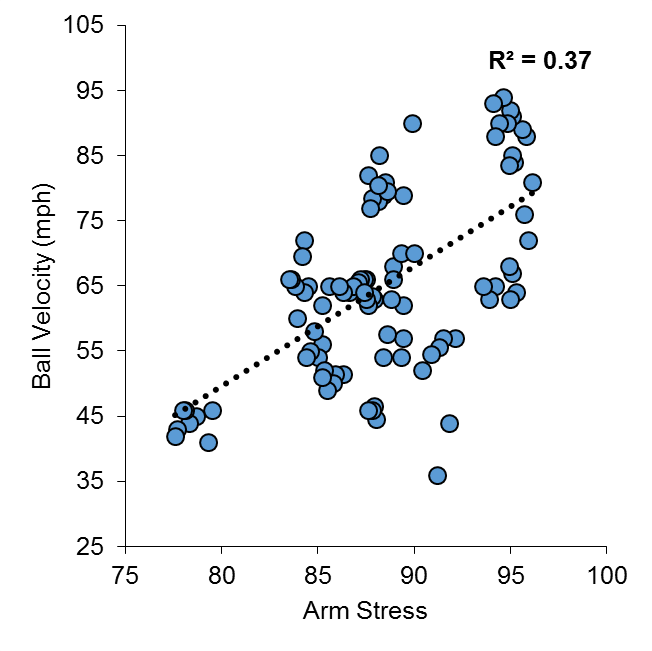
Figure 1 Correlation between Arm Stress and Ball Velocity, for top 9 velocity throws (n = 15 pitchers, 97 pitches)
So, what about the other variables that the Motus sleeve spits out? I can’t tell you with 100% certainty what arm slot, or shoulder rotation means from these data, but I included ball speed, arm speed, arm slot, and shoulder rotation, in a multiple linear regression model to predict Stress. Once again, I used the top 9 velocity pitches from 15 pitchers to do this analysis.
To put all of the variables on the same scale, I converted them all into z-scores – this will give us standardized coefficients that we can compare against one another in our regression output.
In summary, this model produced an r2 value of 0.55, with Arm Slot and Shoulder Rotation not being the weakest predictors of arm stress, and arm speed having a negative relationship with arm stress (Figure 2).
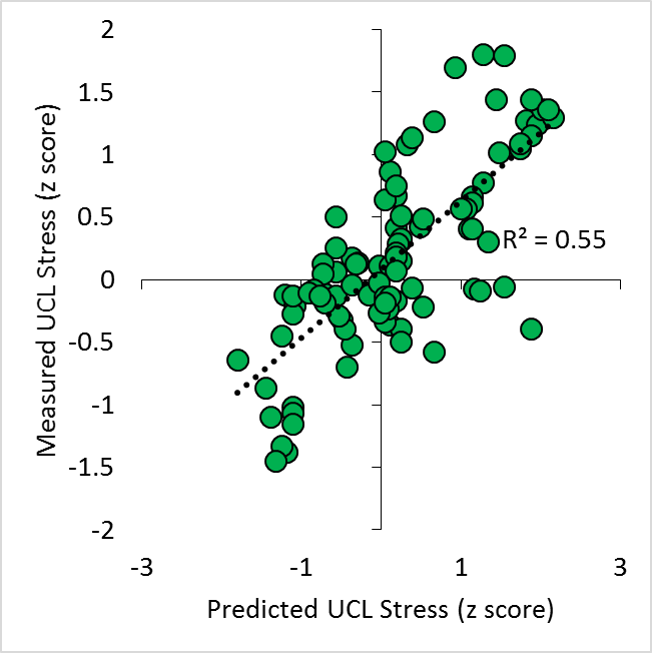
Figure 2. Predicted and actual UCL stress (z scores), from input variables of ball velocity, arm slot, arm speed, and shoulder rotation.
| SUMMARY OUTPUT | ||||||||
| Regression Statistics | ||||||||
| Multiple R | 0.74 | |||||||
| R Square | 0.55 | |||||||
| Adjusted R Square | 0.53 | |||||||
| Standard Error | 0.67 | |||||||
| Observations | 97 | |||||||
| ANOVA | ||||||||
| df | SS | MS | F | Sig. F | ||||
| Regression | 4 | 49.78 | 12.44 | 28.06 | 0.00 | |||
| Residual | 92 | 40.80 | 0.44 | |||||
| Total | 96 | 90.58 | ||||||
| Coefficients | Standard Error | t Stat | P-value | Lower 95% | Upper 95% | Lower 95.0% | Upper 95.0% | |
| Intercept | 0.01 | 0.07 | 0.17 | 0.86 | -0.13 | 0.15 | -0.13 | 0.15 |
| MPHz | 0.83 | 0.09 | 9.77 | 0.00 | 0.66 | 1.00 | 0.66 | 1.00 |
| ArmSpeedz | -0.47 | 0.08 | -5.90 | 0.00 | -0.62 | -0.31 | -0.62 | -0.31 |
| ArmSlotz | 0.16 | 0.08 | 1.97 | 0.05 | 0.00 | 0.32 | 0.00 | 0.32 |
| ShoulderRotationz | 0.11 | 0.05 | 2.10 | 0.04 | 0.01 | 0.22 | 0.01 | 0.22 |
It is quite clear that there are other variables not being measured that will help produce a better model of arm stress, but from the main predictor of arm stress right now remains ball velocity. These data collected using the Motus Sleeve, on one of the more advanced populations of pitchers that have been researched, echoes many of the findings that Hurd et al., (2012) produced in a lab setting. It is important to understand how statistics are interpreted, and what assumptions go in to calculating results.
This study goes deeper into understanding the stress on the arm during pitching (as this is tracked from actual bullpen sessions, and not flat ground throws like in the Bauerfeind study). Other studies that have examined the risk of UCL injury in youth pitchers, have identified fatigue, stature, and cumulative pitch effects as risk factors for injury (Chalmers et al., 2015).
Conclusion
In summary, pitch velocity shows a significant relationship with arm stress, using the Motus Sleeve. If you throw harder, chances are, you will have higher levels of stress on your UCL. It is important to properly condition and be strong, so you can withstand these stresses. There are many other factors that go in to determining just how much stress is on the UCL, but these must be further studied by hard working groups like Driveline, and researchers in other facilities.
Here are the data I used for the analyses above.
References
Chalmers, P. N., Sgroi, T., Riff, A. J., Lesniak, M., Sayegh, E. T., Verma, N. N., … & Romeo, A. A. (2015). Correlates with history of injury in youth and adolescent pitchers. Arthroscopy: The Journal of Arthroscopic & Related Surgery, 31(7), 1349-1357.
Hurd, W. J., Jazayeri, R., Mohr, K., Limpisvasti, O., ElAttrache, N. S., & Kaufman, K. R. (2012). Pitch velocity is a predictor of medial elbow distraction forces in the uninjured high school–aged baseball pitcher. Sports Health: A Multidisciplinary Approach, 4(5), 415-418.
O’Connell, M., Hart, S., & Boddy, K. (2016). Elbow Stress, Motus Sleeve, and Velocity. Retrieved from https://www.drivelinebaseball.com/elbow-stress-motus-sleeve-velocity/, November 4, 2016.
O’Connell, M., & Boddy, K. (2016). Can You Reduce Pitching Elbow Stress Using a Sleeve? Retrieved from https://www.drivelinebaseball.com/can-reduce-pitching-elbow-stress-using-sleeve/, November 4, 2016.
Post, E. G., Laudner, K. G., McLoda, T. A., Wong, R., & Meister, K. (2015). Correlation of shoulder and elbow kinetics with ball velocity in collegiate baseball pitchers. Journal of athletic training, 50(6), 629-633.
Sonne, M.W. (2016). UCL Stress and Velocity Increases. Retrieved from http://www.mikesonne.ca/baseball/ucl-stress-and-velocity-increases/, on November 4, 2016.
Vincent, W., & Weir, J. (1999). Statistics in kinesiology. Human Kinetics. Champagne, Illinois.
Well, now that we know what Brandon Morrow’s stuff looked like with the Jays in 2010, let’s move on to understanding pitcher workloads since 2007.
First – a foray back into my thought process for the days of rest penalty in the metric. If you look back to the second article on Cumulative FU’s, I proposed that for consecutive day appearances, the FU’s be multiplied by 5. For 2 to 4 days of rest, the FU’s were multiplied by 2. For the standard, every 5th day – there was no multiplier for the FUs.
When I looked at the predicted FU’s for all pitchers (and as you’ll see shortly), the high use relievers – 80-100 innings in a season – had the highest workloads – significantly higher workloads than starters for the most part. I thought, I may have to make an adjustment to the metric – but I wanted to look at starter vs. reliever injury rates first.
I downloaded Jon Roegele’s Tommy John Surgery (TJS) list (@MLBPlayerAnalys), and then classified pitchers as relievers (if 80% of more of their innings came from relief innings), or starters. I compared numbers from the 2007 to 2016 seasons. Only pitchers who pitched 10 innings in a season were included in the analysis.
I looked at the sum of innings pitched and the number of TJS that occurred for all pitchers, and came up with a ratio of innings per TJS, for both starters, and relievers.
There were a total of 125092 innings pitched by Relievers during this time period, and 290401.1 innings pitched by starters. During that time, 151 relief pitchers required TJS, and 141 starters required surgery. This worked out to a ratio of 848.4 innings per TJS for Relievers, and 2059.6 innings per TJS. These data should likely be vetted a bit more carefully before they’re viewed as gospel – but this is a scary number. Aren’t reducing innings and pitches during the season supposed to protect relief pitchers’ arms?
I have argued that pitchers often throw harder when they move to the bullpen, and that this extra velocity places more stress on the UCL. In that same time period (2007, to 2016), relief pitchers threw their average fastball at a velocity of 91.5 +/- 3.35 mph, and starters threw their fastball at an average speed of 90.7 +/- 2.6 mph. Maybe, just maybe – those back to back to back appearances that relievers can make are worse for their bodies than the 6 innings pitched every 5 days?
Anyway – let’s move on to the workload metrics since 2007!
Starters
Team Workloads
The 2011 Rays take the cake for total workload for starting pitchers. Lead by David Price and Big Game James Shields, the Rays starters were not only good – they worked hard in the 2011 season. Overall, the highest average workload belonged to the tigers – particularly in 2014 and 2015 seasons.
Individual Workloads
The highest workload for a starting pitcher belongs to Justin Verlander in 2011. In fact, it is alarming to see just how many times Verlander and Sabathia’s names show up in the top 25 of this list. Those guys were horses in their prime – and it’s unknown how those huge workloads contributed to both of their recent injury problems. Conversely – how much of their durability during that time was because they worked so much, and had great pitching fitness?
Relief Pitchers
Bullpen Averages
The Rockies 2012 bullpen put in the most about of work during the past ten years. This was a direct result of a really bad starting rotation – only one pitcher cleared 100 innings pitched. The relief core was totally hung out to dry on this team. Overall, the Nationals had the highest yearly workload average for their bullpen (though this is driven by the late 2000’s when they were not very good). There is a general trend for bullpen workloads to increase in the past 10 years – with 2015 having the highest workload for relievers in that time frame.
Individual Workloads
At first glance, I have to say – these numbers looked just… wrong. Then, I looked again – and they didn’t change.

Francisco Rodriguez put up an INSANE workload in 2010 – 62.84 – with nearly 1800 pitches, and over 100 innings. That’s a lot of exposure to high pressure situations, back to back days, and pitches per inning. The set up men, and the swing men – those who pitch more than an inning in relief, appear to have the highest workload levels. Something else that came up this weekend – was the topic of Dellin Bettances. After giving up a walk off in his third day of work in three days, people talked about his over use with the Yankees. In the past 3 years – no one has a higher workload than Bettances.
You are welcome to question the FU’s! Hit me up at michaelsonne@gmail.com, or on Twitter @DrMikeSonne if you want to debate these findings!
To calculate individual game FU’s, you’ll have to download the pitchFx database. However, if you want to get an idea of how much fatigue a pitcher has accumulated during a season, there is an easier way.
I investigated how well Cumulative FU’s lined up with data I downloaded from FanGraphs from the 2015 season – particularly, the amount of Innings pitched, the pace of pitching, number of relief innings pitched, and total pitches thrown. Using a linear regression approach, I then figured out what the right coefficients would be to predict the cumulative FU’s. Here are the results:
Overall, the R2 value was 0.95, and the RMS error was 3.0 Cumulative FU’s. Not too bad. Looking a bit more specifically, relief innings pitched was the most significant individual predictor, at R2 = 0.43. The combined variables produce the most accurate replication of the Cumulative FU metric.
If you want to use this to estimate workload in pitchers, the formula is: Cumulative FU’s =-3.38 + 0.10 * IP + 0.43 * Relief IP + 0.12 * Pace + 0.004 * Pitches.
With all of this in mind – now, let’s take a look at some 2016 data.
I went on the FanGraphs site, and generated a custom report with IP, Pitches, Relief IP, and Pace included.
Once again, the list ends up being fairly reliever heavy. Erasmo Ramirez has the highest workload so far this season, with at total of 44.38 FU’s. The first starter that appears on the list is Christopher Devenski at number 2 – but he has started 25 out of his 93.1 innings have come as a starter. The first dedicated starter on this list is Trevor Bauer, all the way down at 62. Once again, he has pitched out of the bullpen at times this season. With only starting innings showing up, Justin Verlander is at 72, accumulating 32.3 FU’s on the season.
Catering to my Blue Jays friends, Roberto Osuna leads the team in FU’s, accumulating 34.5 on the season. He’s followed by Joe Biagini, with 33.6. Aaron Sanchez is at 26.7 on the season – which looks like it will be less than his 34.6 FU’s he accumulated during the 2015 season. Here are the Blue Jays cumulative FUs for the 2015, and 2016 seasons, respectively.
As with any metrics, tinkering will happen over time. Interesting to note between the 2015 season – while Sanchez has had a reduction in workload, look at the increase seen by Marcus Stroman. He made his miraculous return in September last year, only accumulating 7.53 FU’s in 2015. This year, he’s at 27.33 FUs.
The dudes over at Driveline gave us scientists the best present we could ever hope for – data. They tested out the new Bauerfeind EpiTrain Powerguard to see if it was effective in reducing elbow stress. To test out the device, they paired it with the Motus Throw Sensor – a device designed to measure stress on the elbow. This device has been tested in the field by Dr. Bryan Cole, and you can find the results over at Beyond the Box Score.
Up here in Toronto, you can’t go 5 minutes into a Blue Jays conversation without hearing about the dilemma the team faces regarding Aaron Sanchez. The young ace Sanchez, is without a doubt, the best pitcher on the team, and arguably one of the top 5 starting pitchers in the American League this season. Last year the Jays spent a ton of prospect capital to go out and get an ace in the trade market – this year, they’re talking about moving the Ace they already have into the bullpen.

Aaron Sanchez. Look at him. He’s perfect in every way. Long live Sanchez! (photo – PETER LLEWELLYN/USA TODAY Sports)
I’m not convinced that this is going to work to reduce stress on Aaron’s arm. Will he throw fewer innings? For sure – but as I’ve tried to demonstrate – fatigue accumulation in the arm doesn’t necessarily depend on the number of innings you pitch, but more on the number of pitches you throw in an inning. Sanchez has been known to dial up his fastball to 100mph out of the bullpen, and this left me asking the question – despite limiting his innings, is Aaron Sanchez going to be exposing his arm to more stress by throwing out of the pen? (From Brook’s Baseball – in 2016, Sanchez’s sinker has averaged 95.26 mph, compared to 97.1 mph in September of 2015 – when Sanchez was used as a reliever). Let’s look at the driveline data to see if we can figure this out.
In the driveline study, 5 pitchers threw 20 pitches each. Some had Powerguard on, some didn’t – but for the sake of this study, I’m going to ignore that factor (they didn’t find there was a reduction in stress, anyway). First, I looked at the relationship between stress and the other variables that came out of the Motus Throw Sensor. There was an R2 of 0.84 between pitch velocity and elbow stress – that means, 84% of the stress on the UCL can be accounted for by the velocity of the pitch. If someone throws harder – they’re going to have more elbow torque, and greater UCL stress. The rest of the variables – they get a bit hazier.

Peak UCL Stress vs. Pitch Velocity – from 5 pitchers, throwing 20 times each. The UCL stress is calculated from the MotusThrow Sensor.
Arm speed has an inverse relationship with elbow torque. Greater arm speeds appear to have less UCL stress, but arm speed only accounts for 25.5% of the variance in UCL stress (an R2 of 0.25). Arm slot accounted for none of the variance in UCL stress (so no fancy graph for this one). Finally, shoulder rotation angle accounted for 34.8% of the variance in UCL Stress. I’m not entirely sure what “shoulder rotation angle” is defining here, so I’m just going to leave it for now. Essentially, with a greater shoulder rotation angle, there is greater UCL stress.
The idea that UCL injuries are more prevalent in higher velocity pitchers is not a new one (Keller et al., 2016). Researchers from the University of Michigan found that one of the most significant predictors for elbow injury was ball speed (Whiteside et al., 2016). However, how does a change in ball speed influence UCL stress?
I used the driveline data, and I rank ordered UCL stress, and Velocity. So – there is a 1 through 20 for Velocity and Stress – which I’ll refer to as individual velocity and individual stress. I then ran a Spearman’s correlation on these data.
There was an R2 of 0.17 – essentially stating that an internal increase of velocity is associated with 17% of the increase in UCL stress. As you can see in this graph, this is not the strongest of relationships. Does a pitcher ramping up and throwing harder, within his own capacities increase stress on the arm? Possibly, but I don’t think it’s that clear.
There are a lot of other factors that go into determining how stress may change between the role of a starter and a reliever. Particularly, relievers (and relievers in the proposed role that Sanchez will fill) will be coming in for high leverage situations. Working in such a stressful situation can change kinematics, as Bill Marras’ group found when exposing those who were lifting boxes to highly stressful work environments (Marras et al., 2000). When preventing injury, recovery is one of the most important aspects of health. Relief pitchers can perform on up to three consecutive days – and while pitching only 1 inning at a time (in most cases), they still need to perform warm up pitches. Their workload is definitely different than a starter’s, but I don’t think there is enough evidence out there to support that switching from a starting role to a reliever’s role is that much of a reduction in demands on the arm.
The Blue Jays hired a high performance team to help make scientific decisions when it comes to things like monitoring a pitcher’s workload. They have a really hard decision ahead of them, and the long term health of Aaron Sanchez depends on them making the right choices.
References
Marras, W. S., Davis, K. G., Heaney, C. A., Maronitis, A. B., & Allread, W. G. (2000). The influence of psychosocial stress, gender, and personality on mechanical loading of the lumbar spine. Spine, 25(23), 3045-3054.
Keller, R. A., Marshall, N. E., Guest, J. M., Okoroha, K. R., Jung, E. K., & Moutzouros, V. (2016). Major League Baseball pitch velocity and pitch type associated with risk of ulnar collateral ligament injury. Journal of Shoulder and Elbow Surgery, 25(4), 671-675.
Whiteside, D., Martini, D. N., Lepley, A. S., Zernicke, R. F., & Goulet, G. C. (2016). Predictors of Ulnar Collateral Ligament Reconstruction in Major League Baseball Pitchers. The American journal of sports medicine, 0363546516643812.

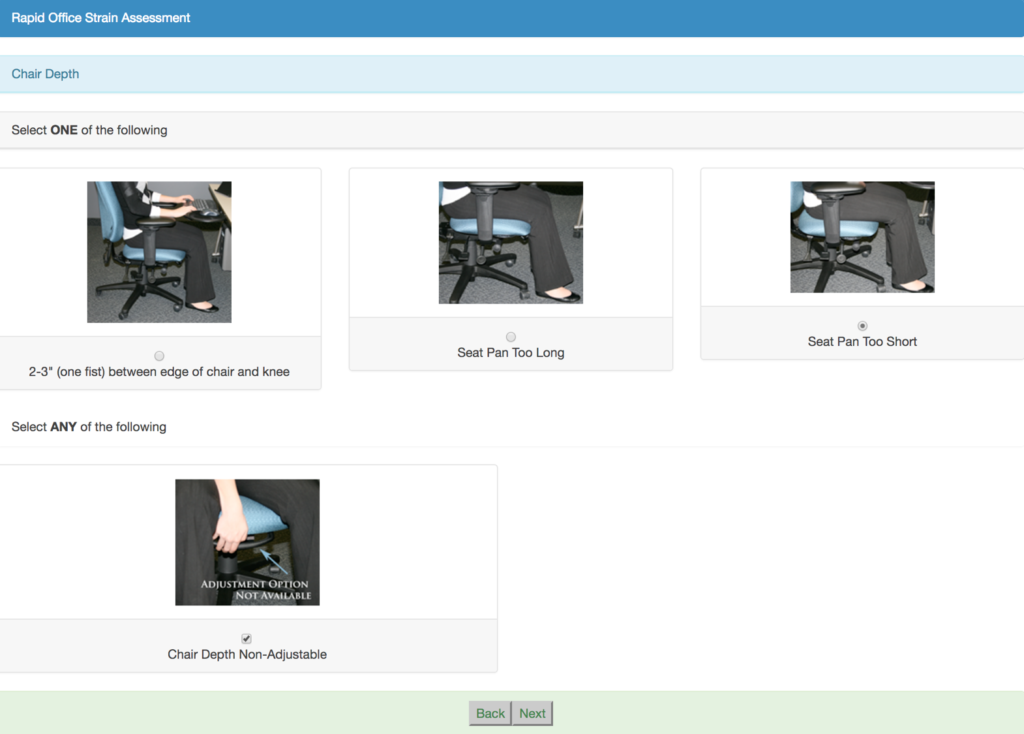
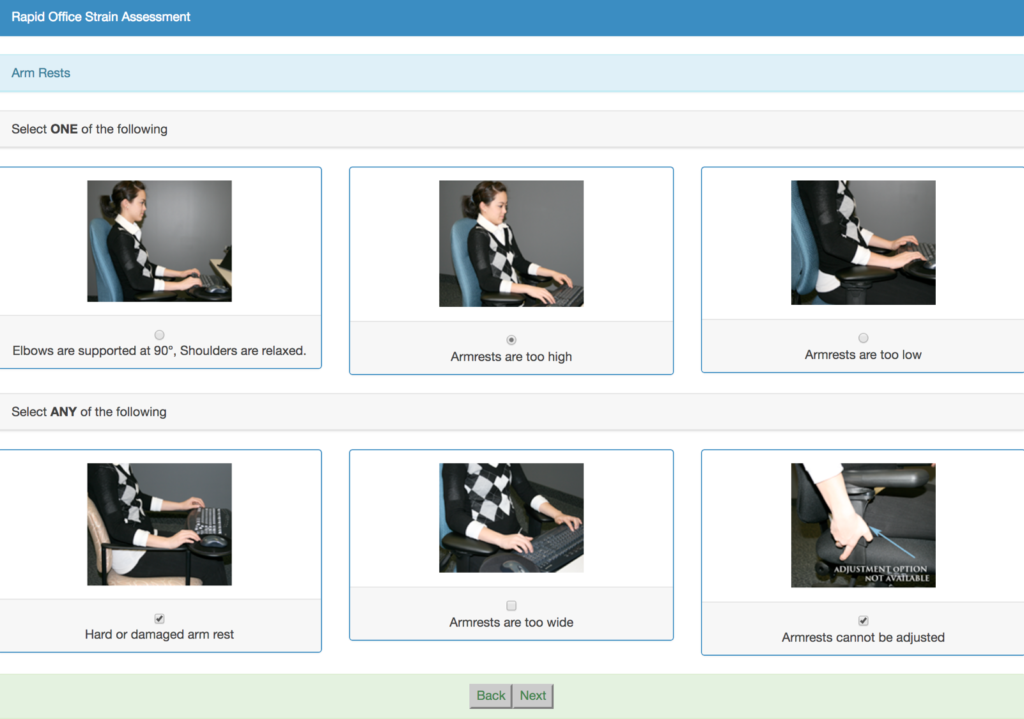


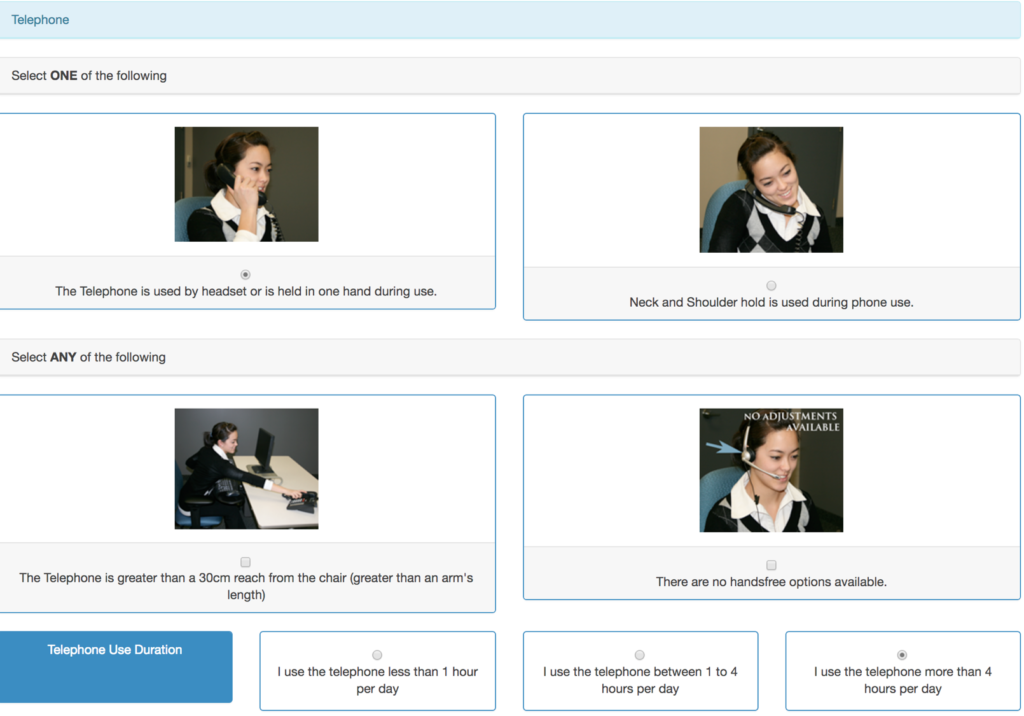

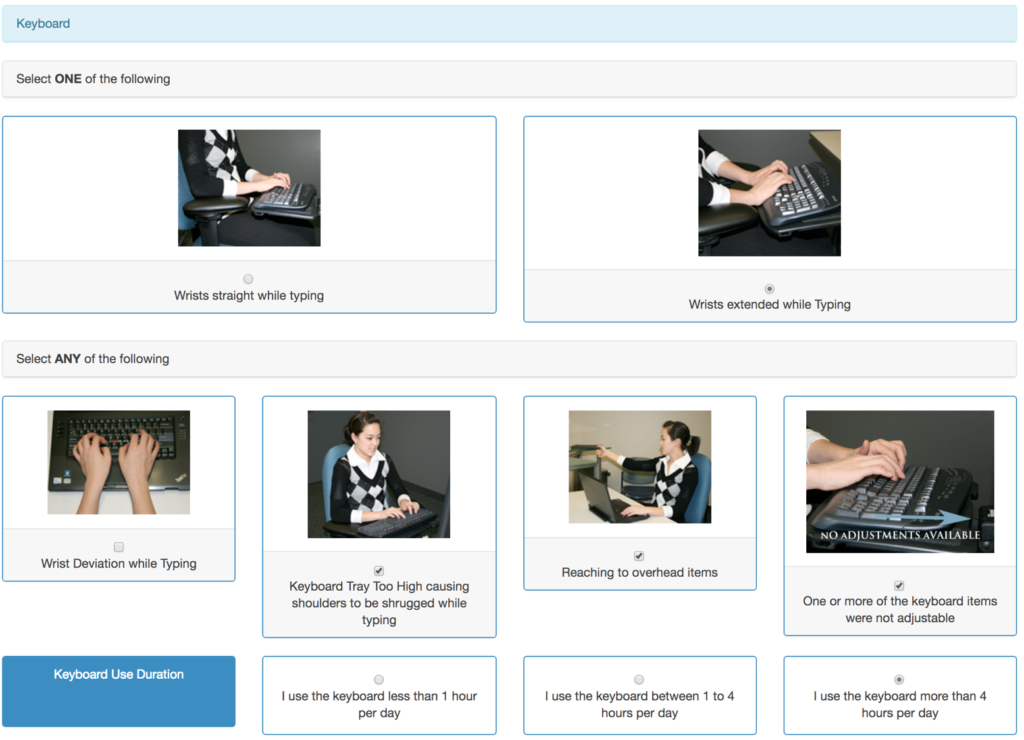
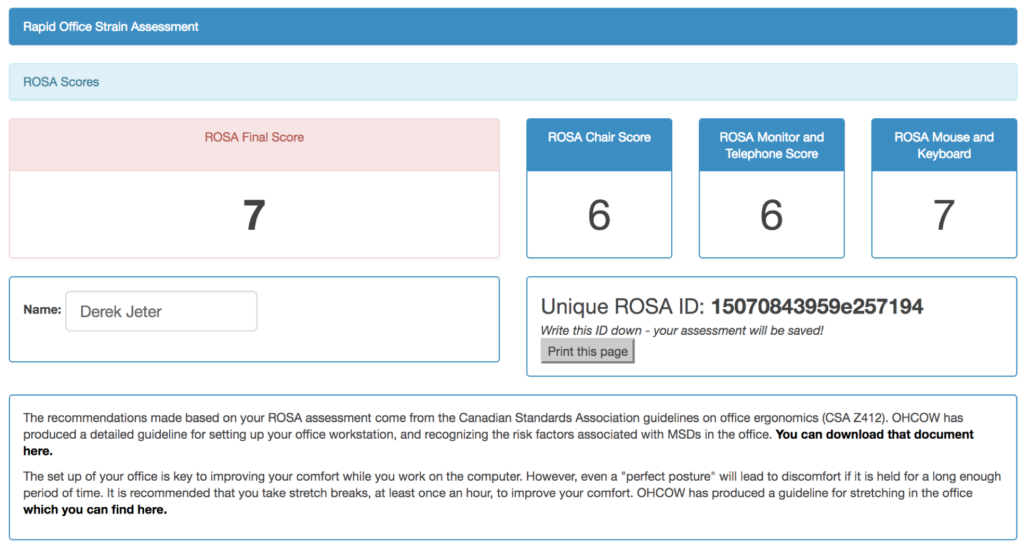
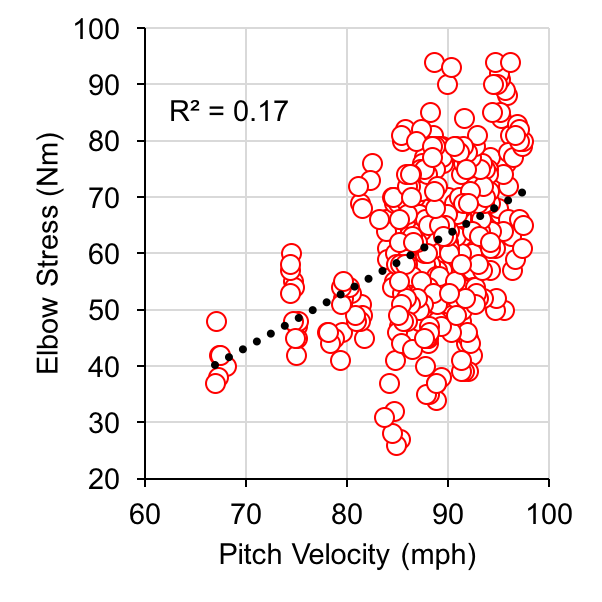



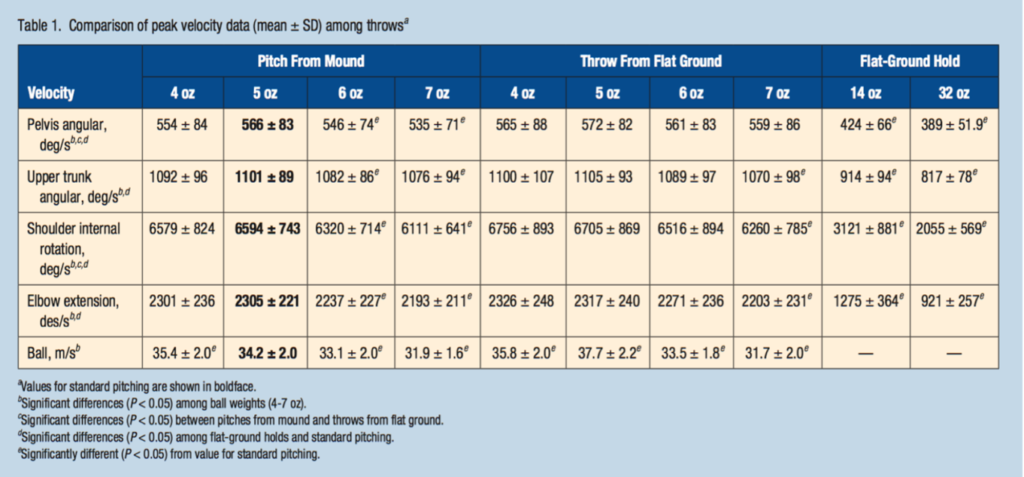
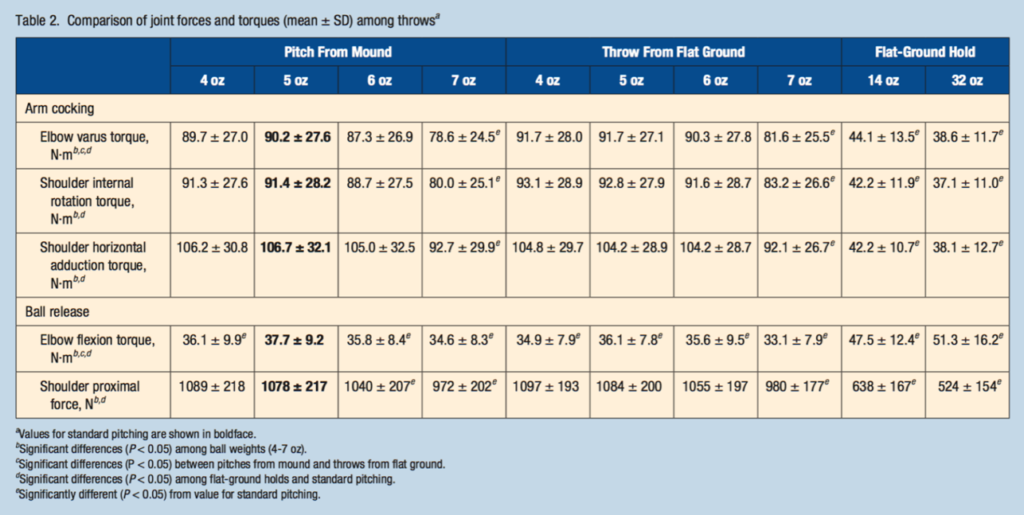
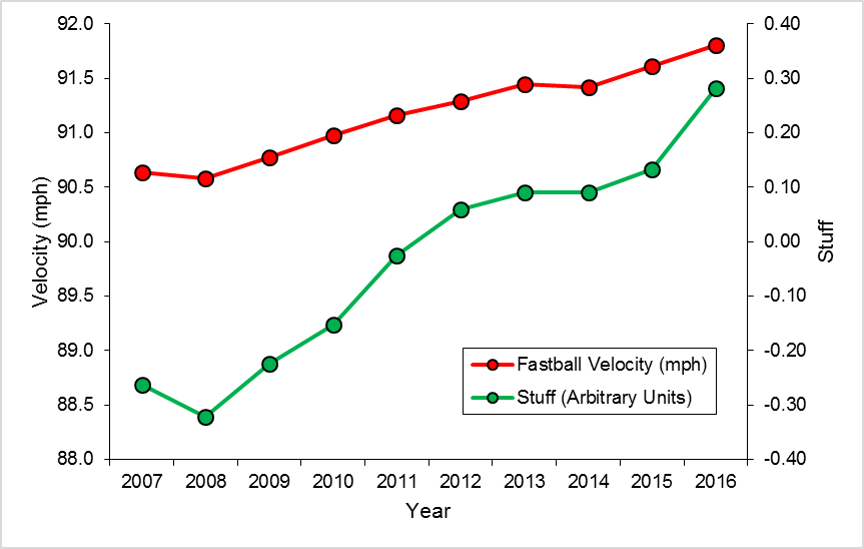


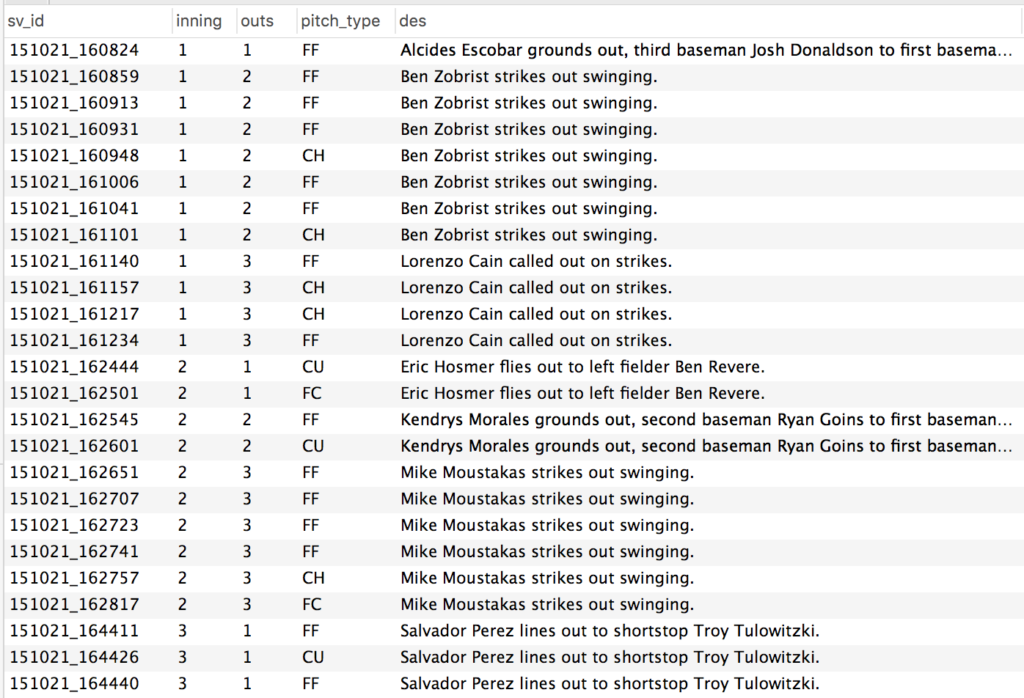
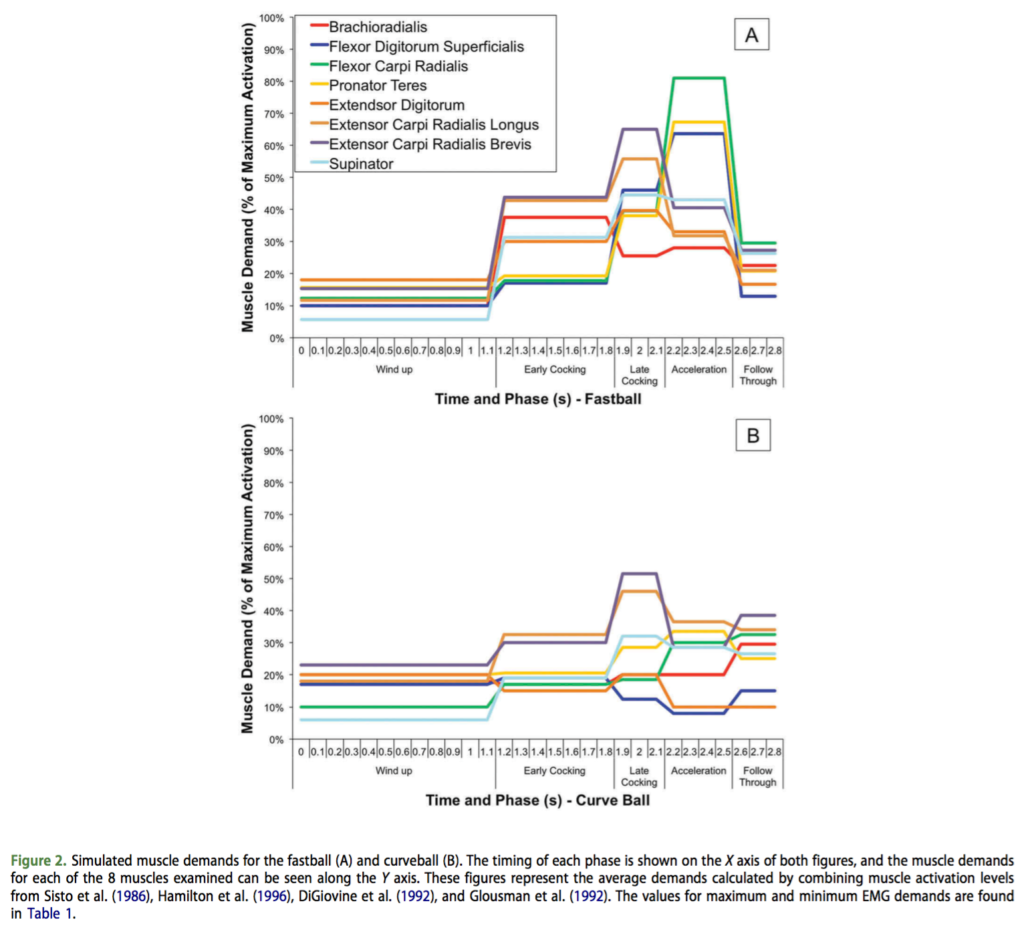
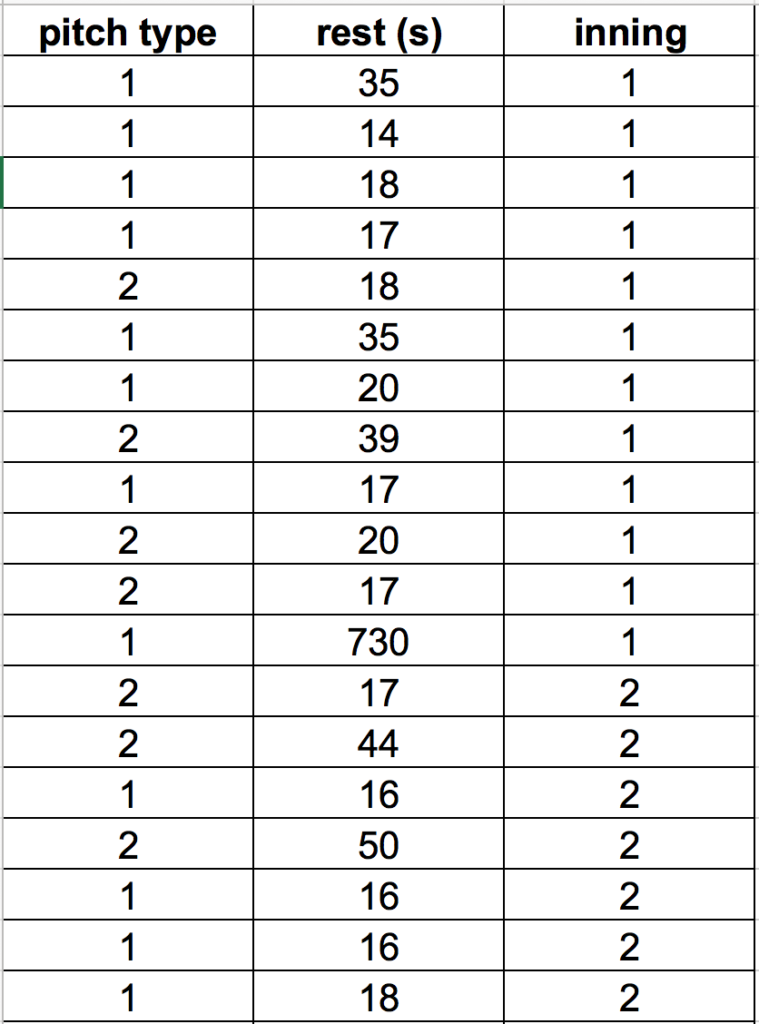


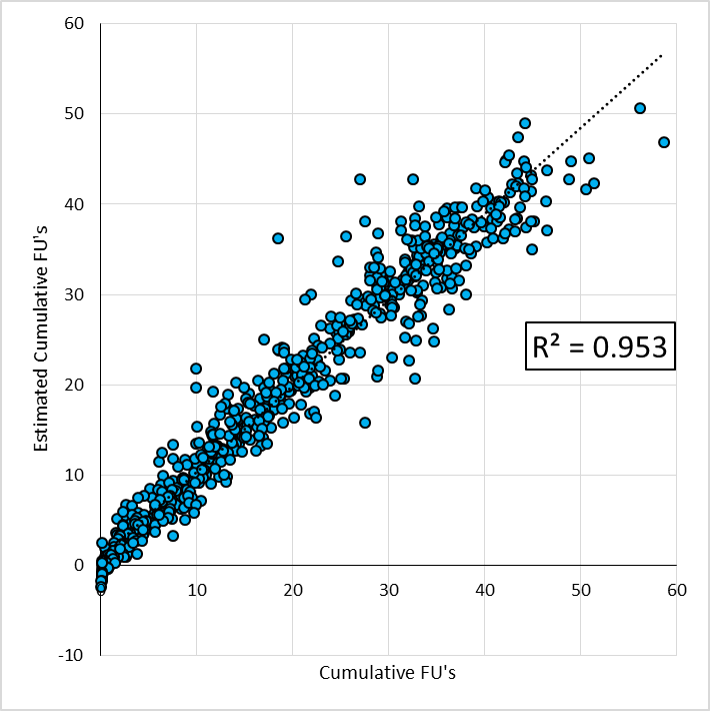





Recent Comments